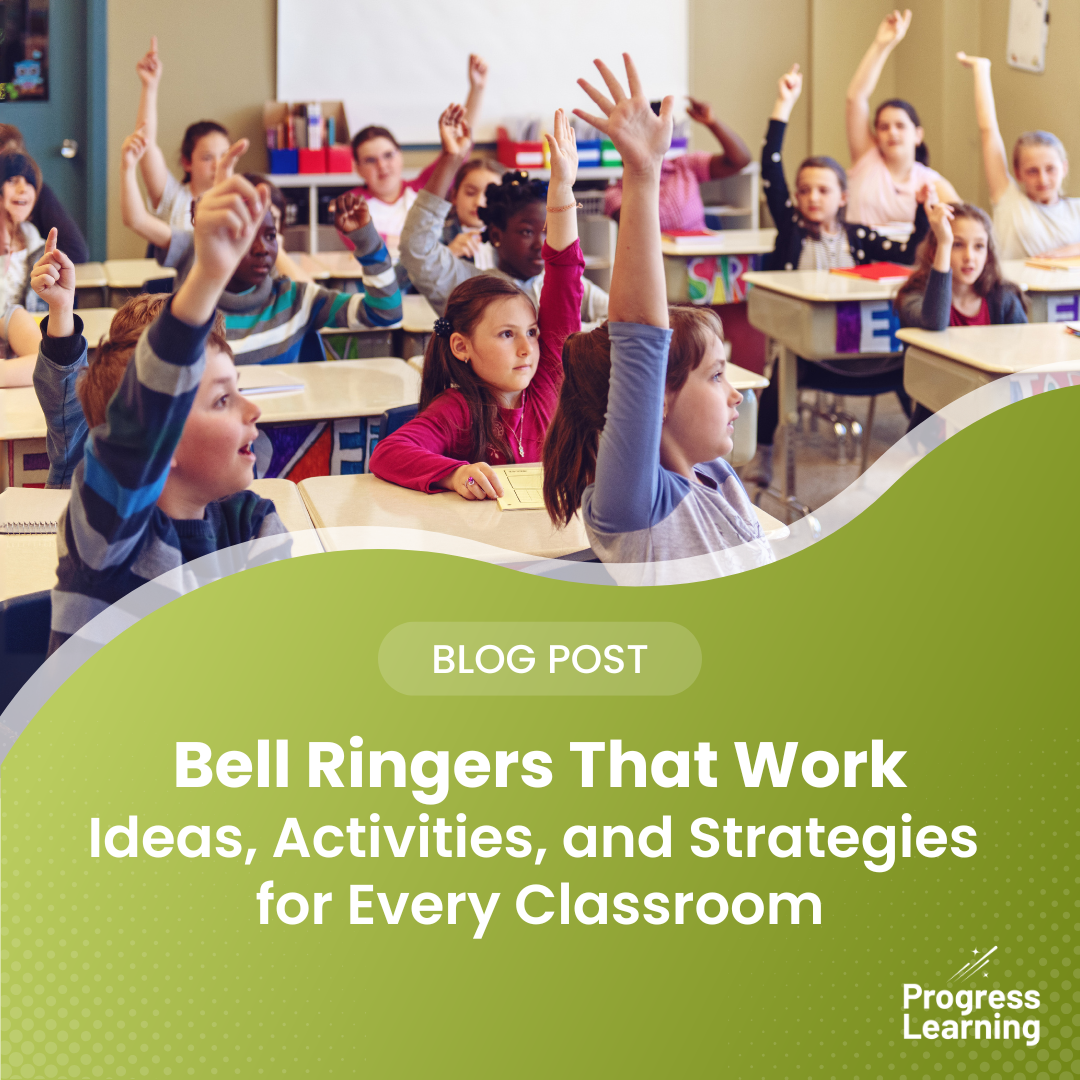Supporting English Language Learners With Progress Learning
ELLs, or English language learners, are students who are acquiring English as a second language. These learners face a unique challenge: not only do they need to master their content and standards, they must also simultaneously learn a new language.
This can be extremely challenging for ELL students — and educators too, who have to adapt their teaching methods to these students. Traditional teaching methods often fall short. Educators must use personalized, inclusive, and creative approaches that not only help ELLs thrive academically but also improve their English proficiency.
Let’s take a look at some strategies you can use when teaching ELLs, as well as how an education technology program like Progress Learning can help.
Supporting English Language Learners
Supporting English language learners requires a thoughtful and inclusive approach to teaching. It’s essential for you, as the educator, to understand their unique challenges, as well as their strengths.
The first step to supporting ELLs is to create a welcoming class environment that fosters diversity and inclusivity. Incorporate culturally relevant content and demonstrate respect and understanding for different cultures and languages. Encourage students to share their background and culture. The goal is to create a safe space for learning.
When teaching ELLs, visual aids like images, charts, and diagrams, are a great tool to help them understand new concepts. Hands-on activities and physical interaction also make learning more engaging and memorable. In addition, it’s important to provide opportunities for ELLs to collaborate with native English speakers so they can build connections and not feel left out.
Using clear and simple language is another key element of teaching ELLs. Avoid complex vocabulary, idioms, or complicated sentence structures. Provide bilingual dictionaries, tutoring, or support groups outside of class to further support ELLs.
Another vital tool when teaching ELL students is differentiated instruction. Working in small groups or one-on-one tutoring can go a long way in supporting ELLs. Some educational technology programs, like Progress Learning, can help make this process easier. They can create personalized Study Plans for ELLs and help you plan for differentiation. They also provide activities and lessons that offer constructive feedback so students don’t become discouraged in their learning.
Finally, it’s important to build relationships with your ELL students. Get to know them, show empathy and understanding, encourage positive self-esteem, and recognize their achievements — no matter how small. On top of that, it’s important to build relationships with parents of ELLs. Encourage them to get involved in their child’s learning, whether that’s through take-home resources or online programs.
How Progress Learning Supports ELLs
Progress Learning is an evidence-based supplemental platform that supports ELLs. Not only does it help ELLs by providing engaging activities, bilingual support, and tailor-made Study Plans, it also helps educators provide accommodations and differentiate their instruction. The tools and resources in the program are designed to enhance language acquisition, fluency, and comprehension across all grade levels, from kindergarten through 12th grade. Let’s take a look at some of the top resources for ELLs:
Tailored Learning Plans
Progress Learning creates a tailor-made Study Plan for each ELL that adapts to their learning level. ELLs can find their specific areas of weakness and work at their own pace. We also offer Liftoff Adaptive Intervention for grades 2-8, which helps students well below grade level master foundational concepts from previous grades. In addition, teachers can use our Assessment/Assignment Builder to create targeted assignments and writing exercises that are specifically tailored to ELLs.
Bilingual Language Support
All K-12 content on Progress Learning is available in both English and Spanish, making it ideal for students in ESL, dual language, or bilingual programs. Teachers can further customize language settings with 3 different learning modes to support individual student needs. In addition, Spanish-language bell ringers and printable activities can be printed out to make small group reteach more focused and intentional. This dual-language support is crucial for developing second-language acquisition skills.
Text-to-Speech
The platform’s text-to-speech feature, available in both English and Spanish, allows students to hear text read aloud, which supports fluency and comprehension across subjects. Teachers can adjust this feature based on each student’s needs, and students can click on the microphone icon to have the text read aloud to them. This text-to-speech tool is perfect for developing fluency in cross-curricular instruction and supporting language acquisition.
Video Explanations
When students get a question wrong, the video explanations clarify and review the answer step by step. It helps students connect language and content visually and auditorily. The videos also offer constructive feedback that motivates, and never discourages, them to keep working hard and improve.
Differentiation Support
One of the most challenging parts of teaching is planning for differentiation. How can you be sure that the small groups you created are grouped together in the most effective way? With Progress Learning, we take out that guesswork. We offer reliable and accurate data at the school, class, student, and even standard level so you can better plan your small groups and reteach time with confidence.
Science of Reading Support
Progress Learning supports the Science of Reading, with tools, lessons, and activities on phonemic awareness, phonics, fluency, vocabulary, and comprehension. The platform offers cross-curricular literacy tools in subjects like math, science, and social studies to enhance reading and comprehension skills across all subjects.
Additional Accessibility Tools in Progress Learning
In addition to direct language support, Progress Learning offers a range of accommodations designed to reduce the burden on students who may already be struggling.
Here are some of the tools that can support ELL students and their teachers:
- 47 different item types, including tech-enhanced items
- Adjustable number of answer choices
- Questions sorted by Depth of Knowledge levels
- Easy duplication of assignments with customizable details for specific students
- Adjustable font size and line spacing for improved readability
- Printer-friendly resources for easy distribution
- Video transcripts for enhanced accessibility
- Highlighter tools to emphasize key information
How Progress Learning Supports the 4 Key Language Domains
Our comprehensive solution helps ELLs develop skills across the four essential language domains: listening, speaking, reading, and writing. Let’s take a closer look at each:
Listening
Active listening is crucial for absorbing a new language. Our video explanations and text-to-speech tools allow ELLs to practice and apply their listening skills, enabling them to internalize the sounds and rhythms of English.
Speaking
The text-to-speech functionality also enhances verbal language skills. By repeating sounds and texts read aloud, students can practice their pronunciation and improve their verbal language skills by mimicking what they hear.
Reading
Our text passages, printable activities, and bell ringers (available in both English and Spanish) help ELLs build comprehension and strengthen decoding skills. Teachers can easily filter assignments by Depth of Knowledge (DOK) levels or Lexile scores, ensuring that ELLs receive appropriately challenging material that fosters vocabulary growth and sentence construction.
Writing
Writing is often the most challenging domain for ELLs. Progress Learning’s constructed response and short answer question types provide meaningful opportunities for students to apply new academic vocabulary and practice English grammar mechanics. These targeted writing exercises support the long-term development of writing skills.
Create a Supportive Environment for ELLs
Whether you use an educational technology program like Progress Learning or another strategy, creating an environment that supports ELLs is essential. By incorporating these teaching methods and using tools designed specifically for English language learners, educators can ensure ELLs build confidence, develop language skills, and achieve academic success.
If you need extra help or want to enhance your ELL instruction, get a demo today and see how Progress Learning can support your ELL students!


